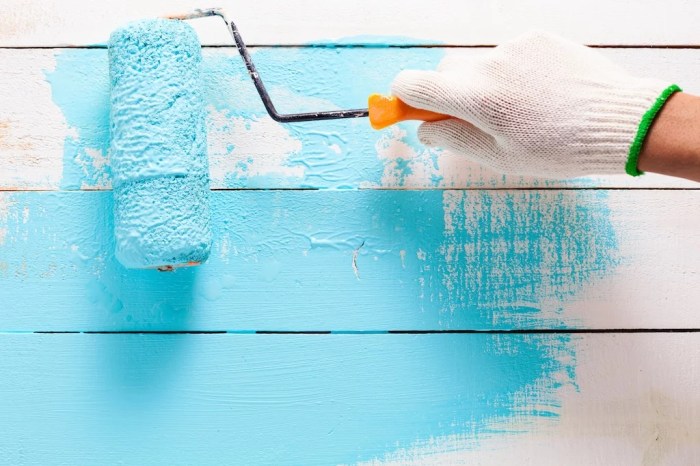Exploring the realm of eco-friendly house paint options unveils a spectrum of choices that not only contribute to a sustainable environment but also enhance the aesthetics of your living space. From water-based paints to natural clay or lime-based options, the world of eco-friendly paints offers a diverse range of benefits worth exploring.
Types of Eco-Friendly House Paints
When it comes to eco-friendly house paints, there are several options available in the market that are both sustainable and environmentally friendly. Let's explore the different types and their benefits.
Water-Based Paints vs. Natural Paints
Water-based paints are one of the most common eco-friendly options available. They have low levels of volatile organic compounds (VOCs), making them less harmful to both the environment and human health. On the other hand, natural paints like clay or lime-based paints are made from natural ingredients such as clay, lime, or chalk.
These paints are biodegradable, non-toxic, and have a unique texture that can add character to walls.
Benefits of Plant-Based Paints
Plant-based paints, derived from ingredients like soy, citrus, or other plant oils, offer a sustainable alternative to traditional synthetic paints. These paints are non-toxic, emit fewer VOCs, and are biodegradable, making them a healthier choice for both the environment and indoor air quality.
Additionally, plant-based paints often have natural antimicrobial properties, which can help inhibit the growth of mold and mildew in your home.
Features and Benefits of Eco-Friendly House Paints
Eco-friendly house paints offer a range of features and benefits that make them a popular choice for environmentally conscious consumers.
Key Features of Eco-Friendly House Paints
- Low VOC (Volatile Organic Compounds) Formulation: Eco-friendly paints contain significantly lower levels of harmful VOCs compared to conventional paints, reducing indoor air pollution and promoting better air quality.
- Natural Ingredients: Many eco-friendly paints are made from natural, renewable resources such as plant oils, clay, and minerals, making them biodegradable and non-toxic.
- Water-based Formulation: Eco-friendly paints are often water-based, reducing the need for harsh chemicals and solvents, making them safer for both the environment and human health.
Contribution to Indoor Air Quality
Eco-friendly house paints play a crucial role in improving indoor air quality by minimizing the release of toxic chemicals into the air. This helps create a healthier living environment, especially for those with respiratory issues or allergies.
Durability and Longevity
Despite being eco-friendly, these paints are known for their durability and longevity. They offer excellent coverage, resist fading, and are less prone to cracking or peeling, providing a long-lasting finish that can withstand the test of time. This not only reduces the frequency of repainting but also contributes to less waste in the long run.
Application and Usage of Eco-Friendly Paints

When it comes to applying eco-friendly house paints, it is important to follow the proper steps to ensure a successful and long-lasting finish. Additionally, there are some special considerations and techniques that should be taken into account, as well as tips for maintaining and caring for walls painted with eco-friendly options.
Step-by-Step Guide to Applying Eco-Friendly House Paints
- Prepare the surface by cleaning and repairing any imperfections.
- Prime the surface if necessary, using a suitable eco-friendly primer.
- Stir the eco-friendly paint thoroughly before application.
- Apply the paint using a brush, roller, or sprayer in thin, even coats.
- Allow the paint to dry completely between coats as per the manufacturer's instructions.
- Clean up tools with water or another eco-friendly cleaning solution.
Special Considerations and Techniques for Using Eco-Friendly Paints
- Avoid painting in extreme temperatures or high humidity to ensure proper drying.
- Use proper ventilation when applying eco-friendly paints to minimize exposure to fumes.
- Consider using low-VOC or zero-VOC paints for indoor spaces to reduce indoor air pollution.
Tips for Maintaining and Caring for Walls Painted with Eco-Friendly Options
- Regularly clean walls with a gentle cleanser and water to prevent dirt buildup.
- Avoid using harsh chemicals or abrasive cleaners that can damage the paint finish.
- Touch up any scratches or chips with the same eco-friendly paint to maintain the integrity of the finish.
Cost Comparison and Long-Term Savings
When it comes to comparing the cost of eco-friendly paints with traditional paints, it is important to consider both the initial investment and the long-term savings that can be achieved.
Initial Cost Comparison
While eco-friendly paints may have a slightly higher upfront cost compared to traditional paints, the benefits they offer in terms of health and environmental impact can outweigh this initial expense.
Long-Term Savings with Eco-Friendly Paints
Using eco-friendly paints can lead to long-term cost savings in various ways. These paints are known to be more durable and resistant to wear and tear, which means they require less frequent repainting. This can result in reduced maintenance costs over time.
Additionally, eco-friendly paints are often formulated to have low or no volatile organic compounds (VOCs), which can improve indoor air quality and reduce the risk of health problems. This can lead to potential savings on healthcare expenses in the long run.
Financial Incentives and Rebates
Many government agencies and organizations offer financial incentives or rebates for choosing eco-friendly house paints. These incentives can help offset the initial cost difference between eco-friendly and traditional paints, making them a more cost-effective option in the long term.
Summary

In conclusion, opting for eco-friendly house paint options not only elevates the visual appeal of your home but also promotes a healthier indoor environment. With their durability, cost-effectiveness, and positive impact on air quality, these paints stand as a testament to the harmony between sustainability and style.
User Queries
Are eco-friendly paints as durable as traditional paints?
Eco-friendly paints are known for their durability and longevity, often outlasting conventional options due to their high-quality ingredients.
Do eco-friendly paints cost more than regular paints?
While the initial cost of eco-friendly paints may be slightly higher, their long-term savings and environmental benefits outweigh the upfront expense.
How do eco-friendly paints contribute to indoor air quality?
Eco-friendly paints release fewer harmful chemicals into the air, thus improving indoor air quality and creating a healthier living environment.













